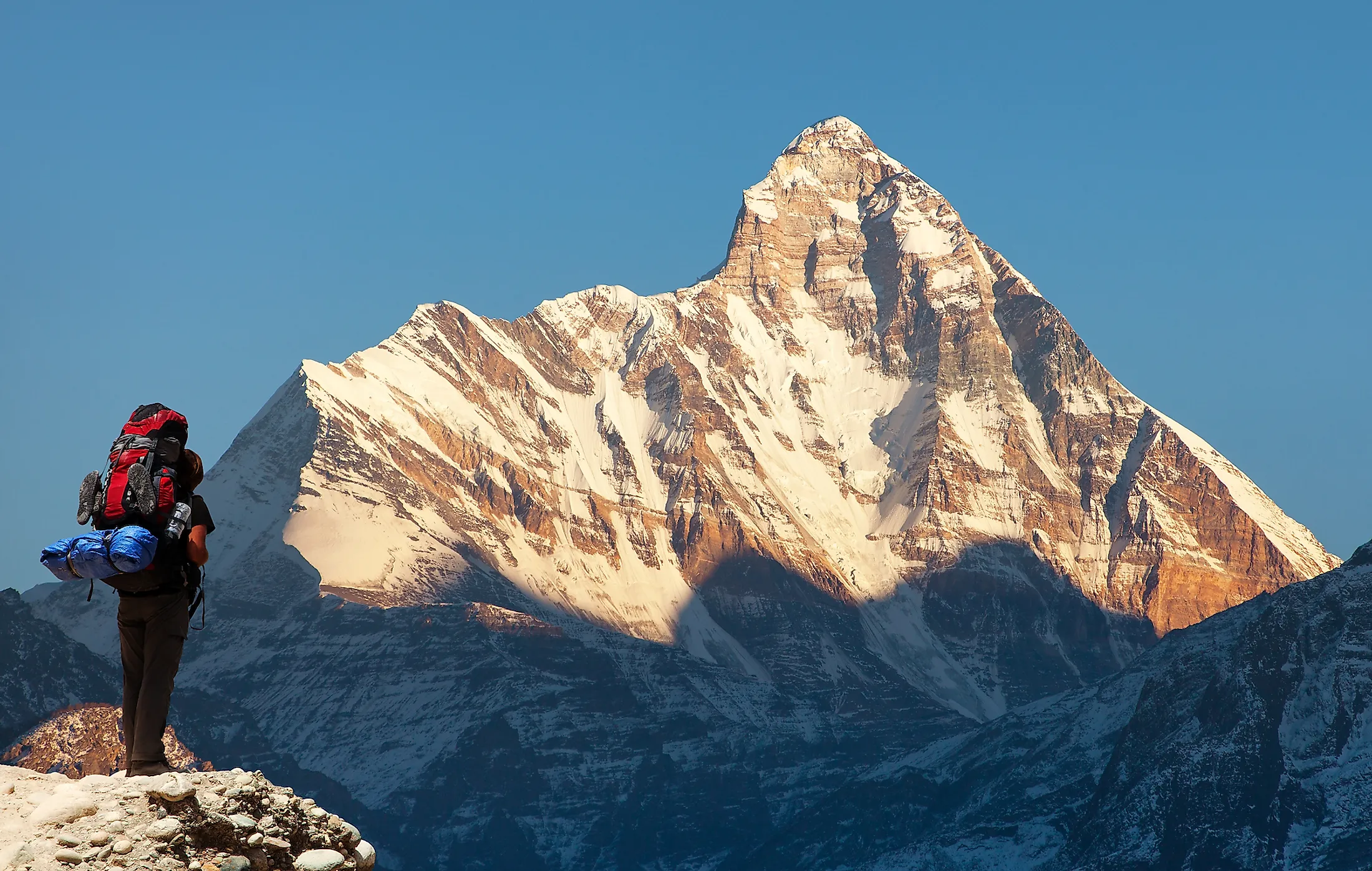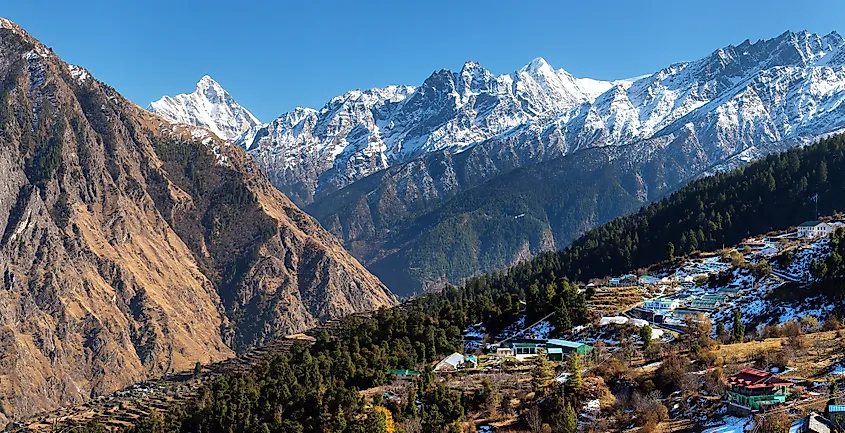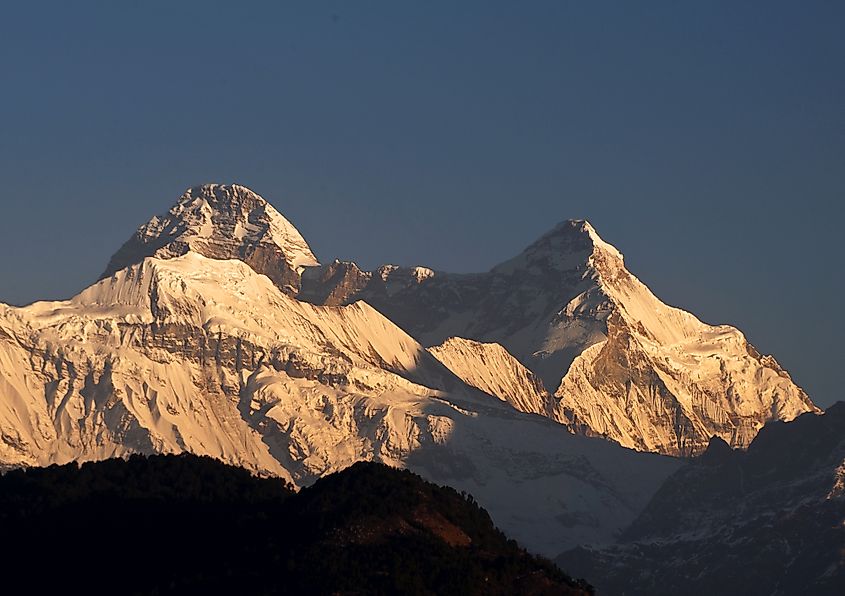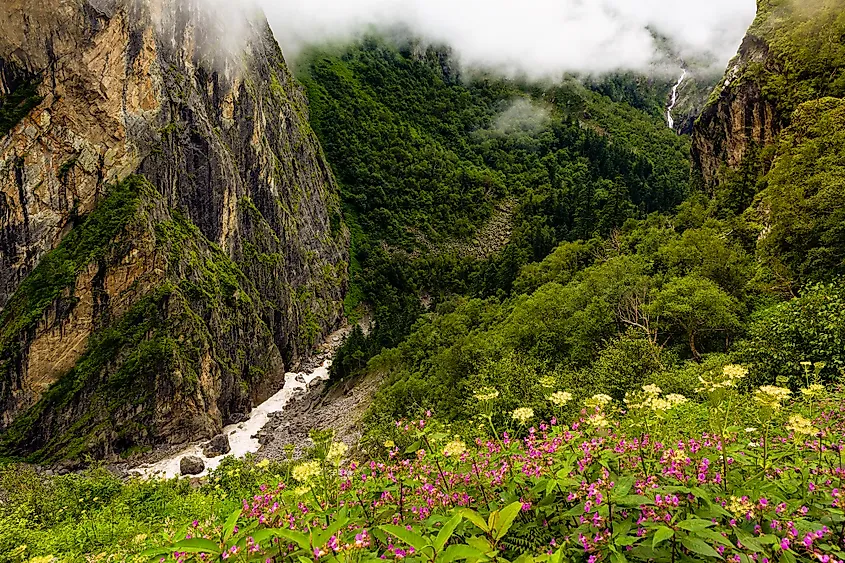
Mount Nanda Devi
Mount Nanda Devi is a two-peaked mountain in northern India and the world’s 23rd highest mountain. It is India’s second-highest mountain after Kangchenjunga (shared by Nepal) and the highest mountain located wholly in the country. However, it was the country’s highest mountain before Sikkim became part of India in 1975. Nanda Devi was presumed to be the world’s highest mountain when Nepal was still closed to the world. It rises 7,816 meters above sea level and has a topographic prominence of 3,139 meters, making it the world’s 74th most topographically prominent mountain. The snowmelt and glacier from the mountain feed several streams and rivers, including Rishiganga and Dhauliganga Rivers.
Location

Mount Nanda Devi is located in Uttarakhand state in northern India, bordering Tibet and famous for its religious significance. It is situated west of Goriganga Valley and east of Rishiganga Valley in the Chamoli Garhwal district. The massif is located within the Nanda Devi National Park and is surrounded by a barrier ring called the Nanda Devi Sanctuary. The barrier ring contains some of the tallest peaks in the Indian Himalayas, including 12 peaks rising above 6,400 meters. Some of the peaks bordering the Nanda Devi include Dunagiri and Kalanka on the north, Nanda Khat on the southeast, Trisul and Mrigthuni on the southwest, and Nanda Ghunti on the west. It is flanked on the north by the Uttari Nanda Devi Glacier and southwest by the Dakkhini Nanda Devi Glacier.
Major Features

Mount Nanda Devi is part of the Kumaon Himalayas, a section of the northern Himalayas located in the Kali River’s east and about 320 kilometers from the Sutlej River. The Kumaon Himalayas is divided into Garhwal and Kumaon hills, of which Nanda Devi is part of the Garhwal Range. Nanda Devi has two peaks, eastern and western summits, separated by a 2-km-long high ridge. The western summit is the higher of the two summits, rising 7,816 meters above sea level. Nanda Davi East (eastern summit), also known as Sunanda Devi, has an elevation of 7,434 meters and prominence of 260 meters. The two peaks are often called the peaks of the goddesses of Sunanda and Nanda and are regarded as sacred or religious sites.
Brief History

Explorers took about fifty years searching for a passage into the Nanda Devi Sanctuary to allow for the ascent of the mountain. English mountaineer Hugh Ruttledge, who unsuccessfully attempted to reach the summit three times in the 1930s, described entry to the Sanctuary as more difficult than getting to the North Pole. In 1934, two British explorers, Tilman and Shipton, and three local companions finally found their way into the Sanctuary through a narrow canyon known as the Rishi Gorge. Two years later, Noel Odell and H. W. Tilman became the first people to climb Nanda Devi, making it the highest peak to be successfully climbed by a human. It held the world summit record until the 1950 French Annapurna Expedition. N. Kumar and a team of Indians successfully reached Nanda Devi’s summit for the first time in 1964. The Indian government declared the mountain and the surrounding area a biosphere reserve in 1982. Six years later, UNESCO designated Nanda Devi National Park a World Heritage Site because of its natural and cultural significance.











